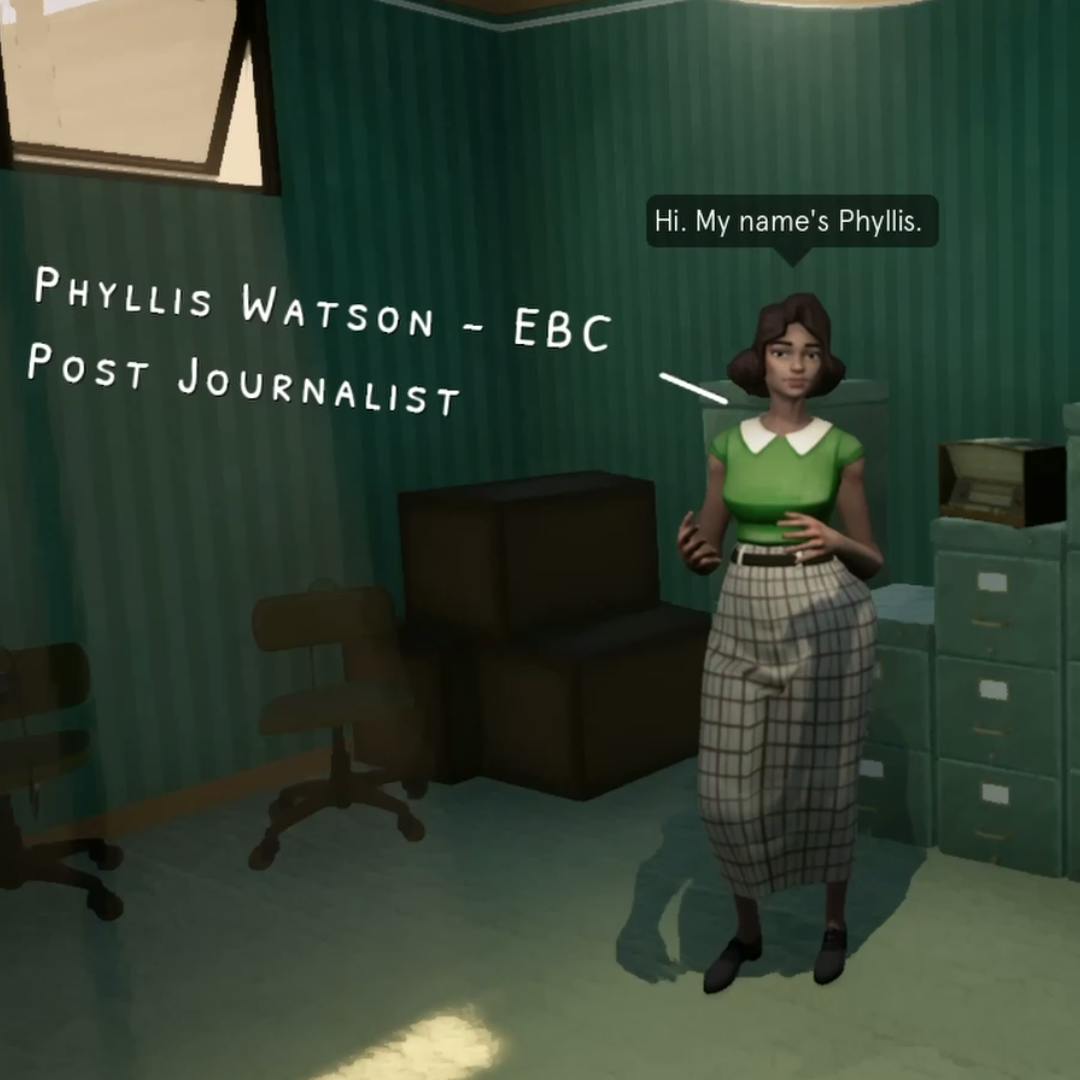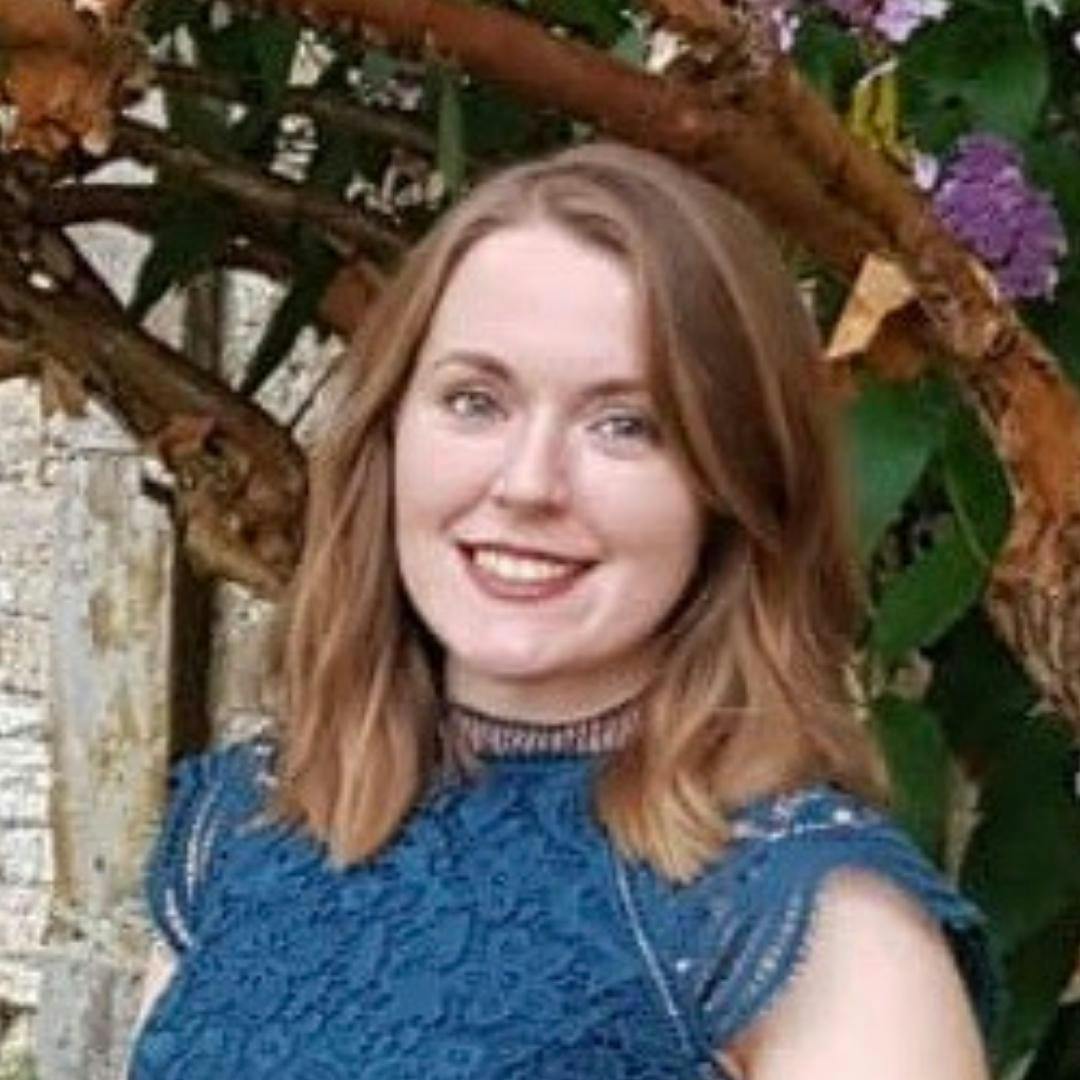Wyndham’s characters in The Kraken Wakes are vivid. Take Phyllis, the protagonist’s wife and fellow journalist. We learn through Mike’s own eyes that Phyllis knows her own mind – could not be “overpersuaded”, even by her husband – and that her conversational skills are dazzling, “something like a combination of skilled juggling and expert chess”. We learn, too, that she has a vivid imagination and a strong sense of empathy, a love of tropical weather, a thirst for the truth, and a periodic habit of fleeing London to “commune with nature”. There’s a wealth of material for a game writer to work with. But what about a character designer?
Charisma specializes in bringing characters to life: in powering believable, interactive NPCs with whom players can hold real conversations. We’ll be exploring this in terms of voice, writing, and character emotions in later blog posts, but first, we’ll focus on the visuals. Let’s look at how Phyllis went from being a powerful character in a novel, to a fully fleshed-out person in a narrative designer’s head, to a stylish 3D NPC.
A CATCHY BIO
All of our key characters begin with a character bio. Our narrative designer Rianna has created comprehensive fact files covering everything from goals and interests, to conversational style and favoured phrases, to player relationship, and even personality test results (Phyllis is an ENFP. Obviously). In terms of appearance, Wyndham gives us little to go on, so Rianna has imagined a Phyllis who works with both Wyndham’s characterisation and our vision for the game. Here’s the design brief:
Early 30s, Female, Black African Caribbean, short height, medium-large build.
Efficient, approachable, artistic and passionate. Her clothes are casual but fashionable, bold and attractive.
From here, it was time for our brilliant character designer, Emily Shilling, to take over.
A SKETCHY START
Emily’s first step was to produce a series of beautiful character sketches, based on Rianna’s bios and briefs. Below, we have the early designs for Phyllis. The whole team loved the look from the start, and you’ll see later on that the game version of Phyllis looks almost identical to these early sketches. In the very earliest sketch, on the left, we decided that Phyllis’s head was a little too small. The player’s ability to influence character emotion is integral to The Kraken Wakes – it’s a unique feature of Charisma’s conversation engine – so we wanted to make sure those emotions were extra visible!
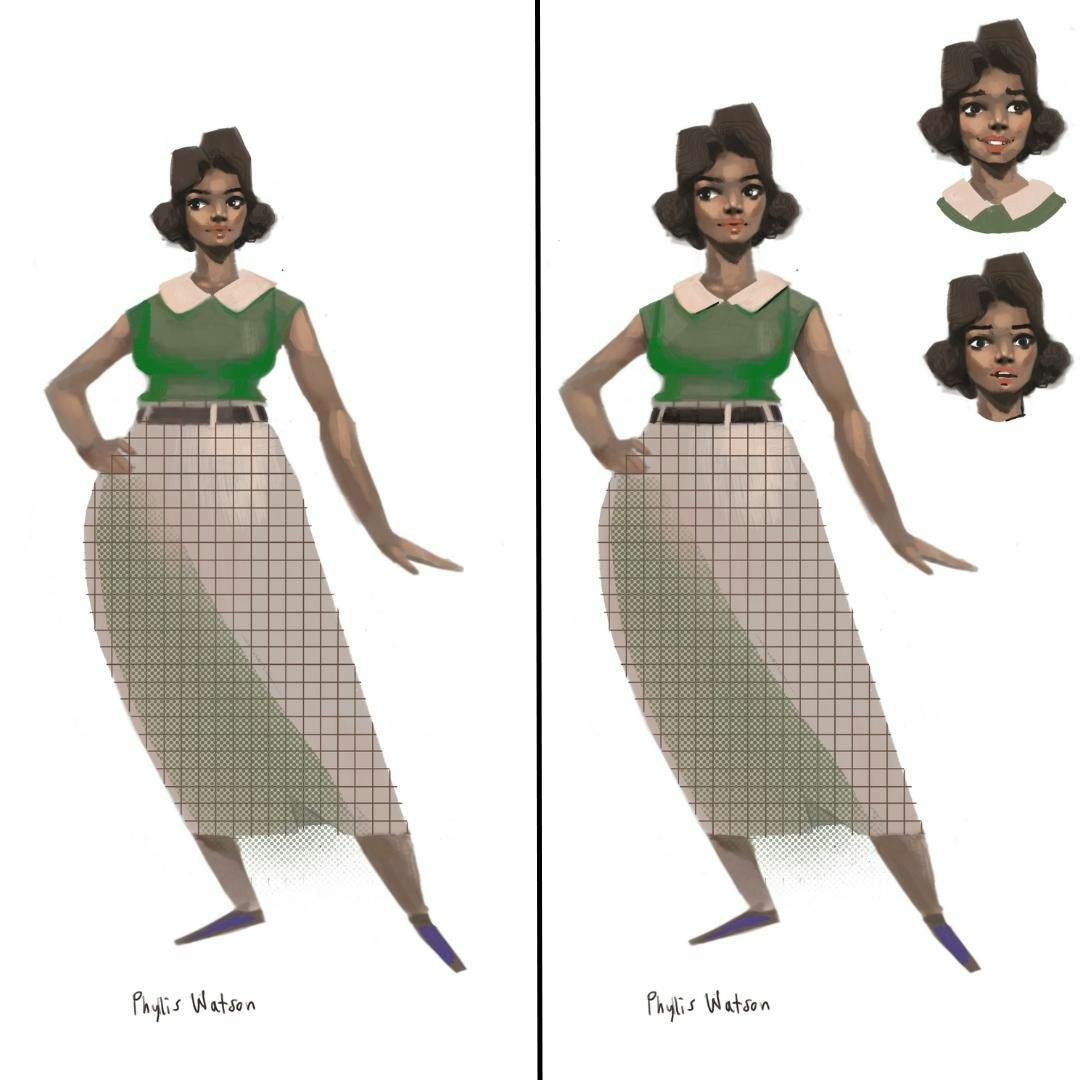
MODEL BEHAVIOUR
Once the designs had been signed off, it was time for Emily to start building Phyllis. This began with a high-poly sculpt using ZBrush:
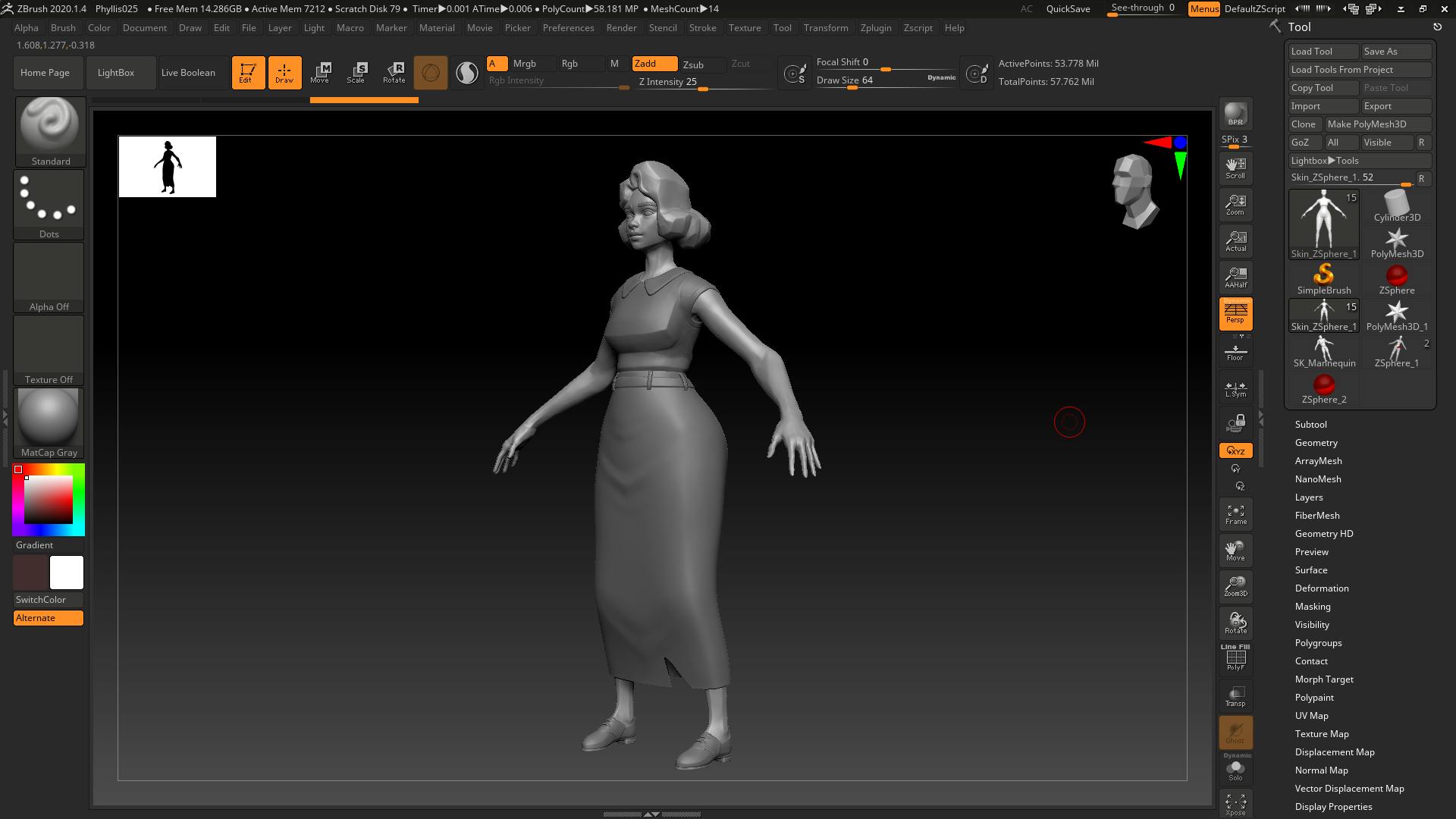
Once this initial, highly detailed 3D model had been sculpted, Emily then retopologized the model into a low poly mesh in Maya. In case you're new to 3D modelling processes, retopology means simplifying a mesh to make it cleaner and easier to work with – important if you’re going to be deforming the model in some way, for instance, by animating it.
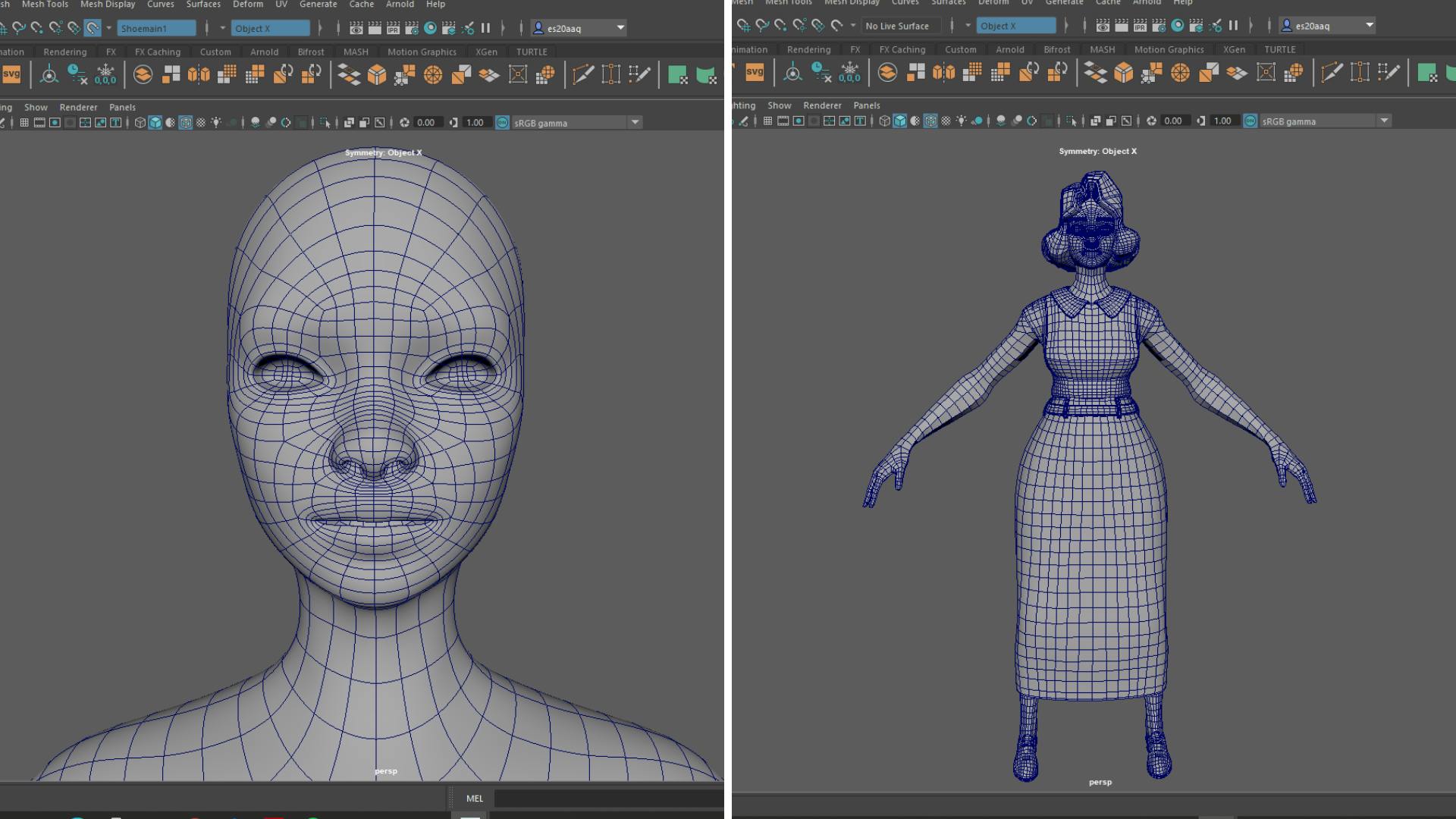
LET'S KEEP THINGS MOVING
Next up, it was time to make it possible for Phyllis to move. This was done by our game developer, Oscar, by skinning and rigging the model in Maya using Advanced Skeleton 5. For those of you not familiar with game dev terminology, it’s a lot less violent than it sounds. A rig is a series of connected joints that define how a model can move – essentially a bit like a skeleton. Skinning is the process of binding the 3D mesh (in this case, our Phyllis model) to the rig, so that the model can move. Here’s a screenshot of the process in action:
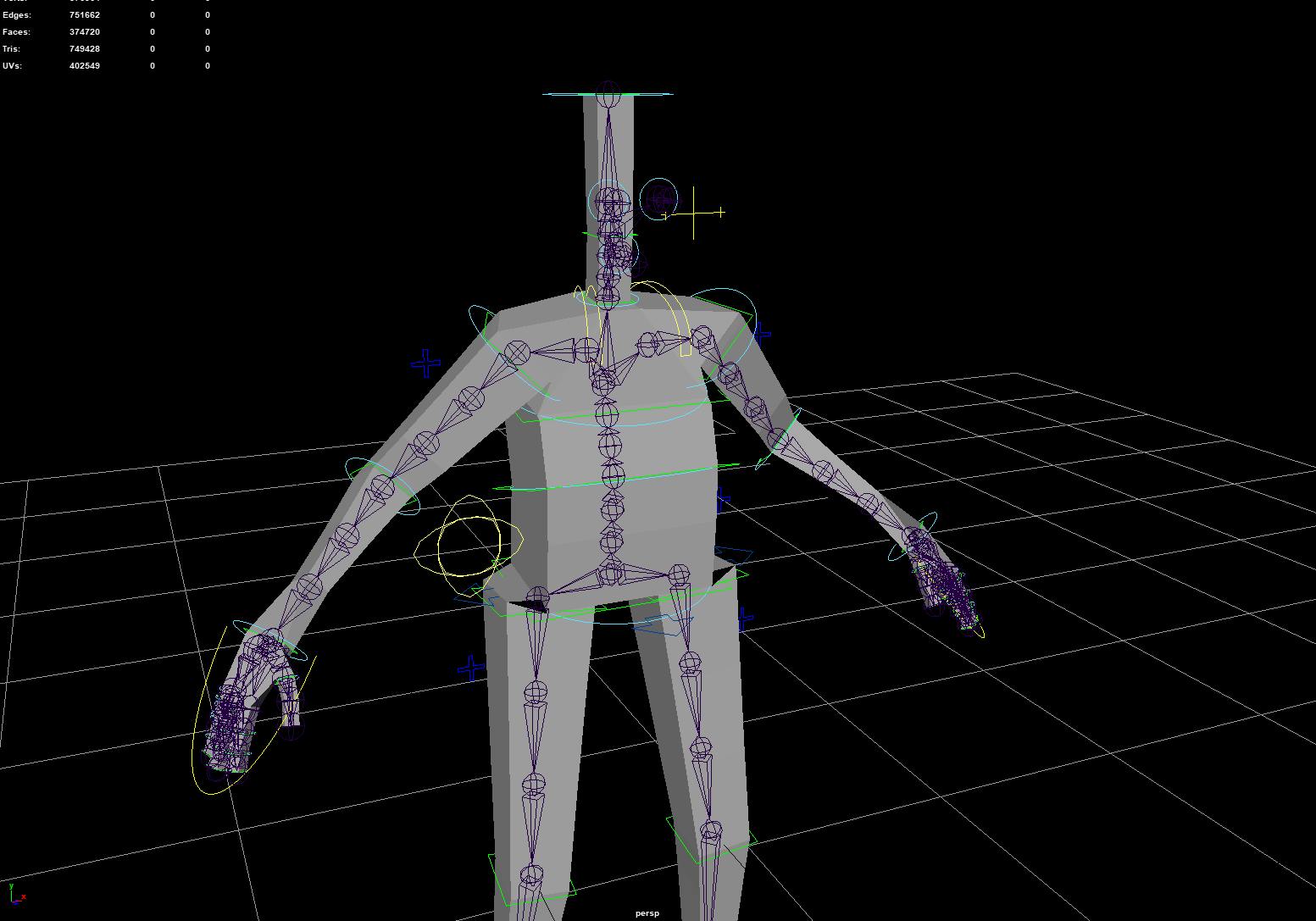
TIME TO ADD SOME COLOUR
The final stage of the character creation process is texturing (adding colours and surface materials to the model). The first step in texturing a model is unwrapping UVs. This literally means flattening out a 3D object into a 2D shape, which makes it much easier to map textures onto:
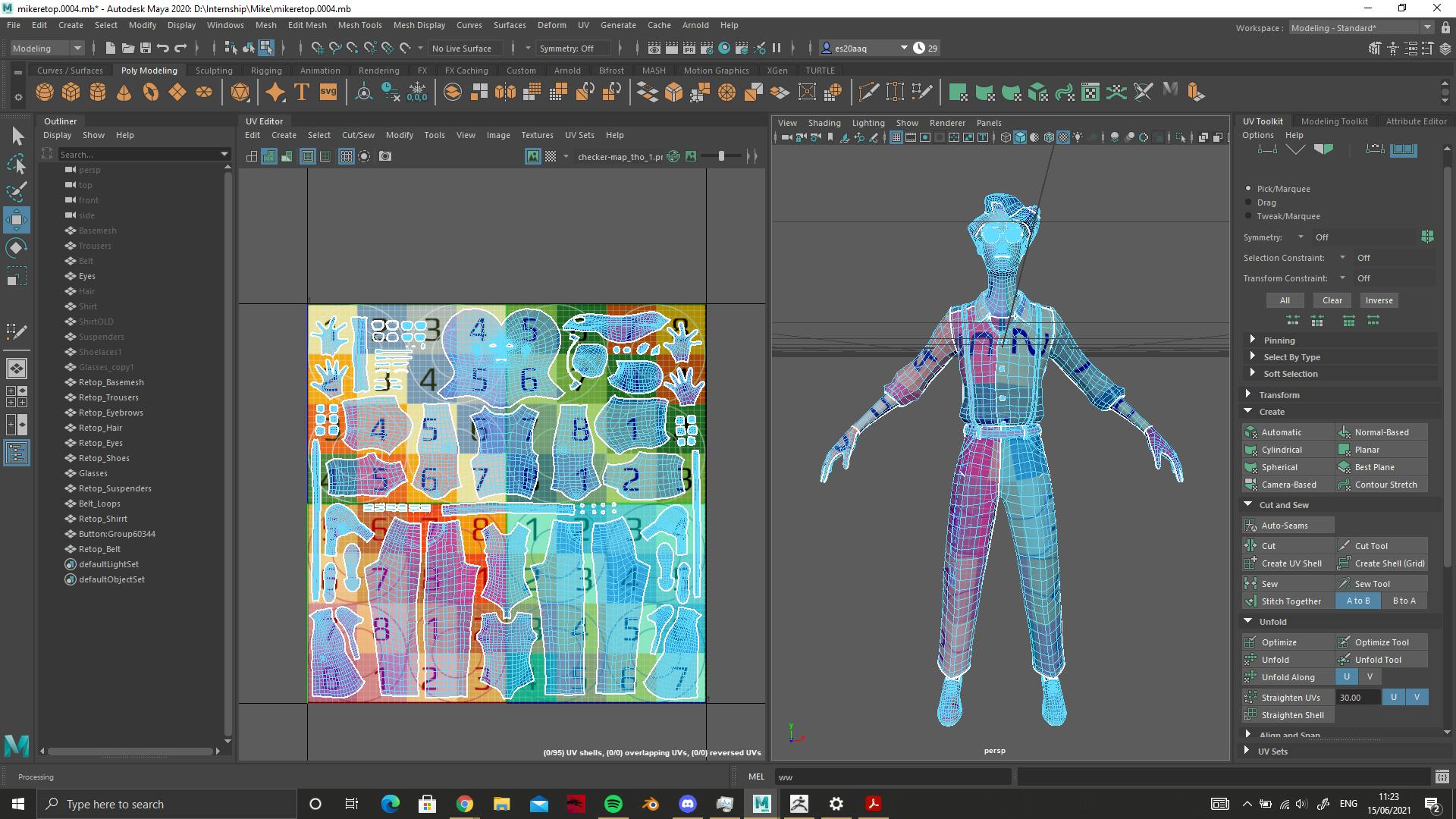
We didn’t manage to capture a screenshot of this process for Phyllis, so here’s an image of unwrapping UVs for Mike’s model.
Emily then added the textures in Substance Painter, recreating her design sketch as a 3D character model:
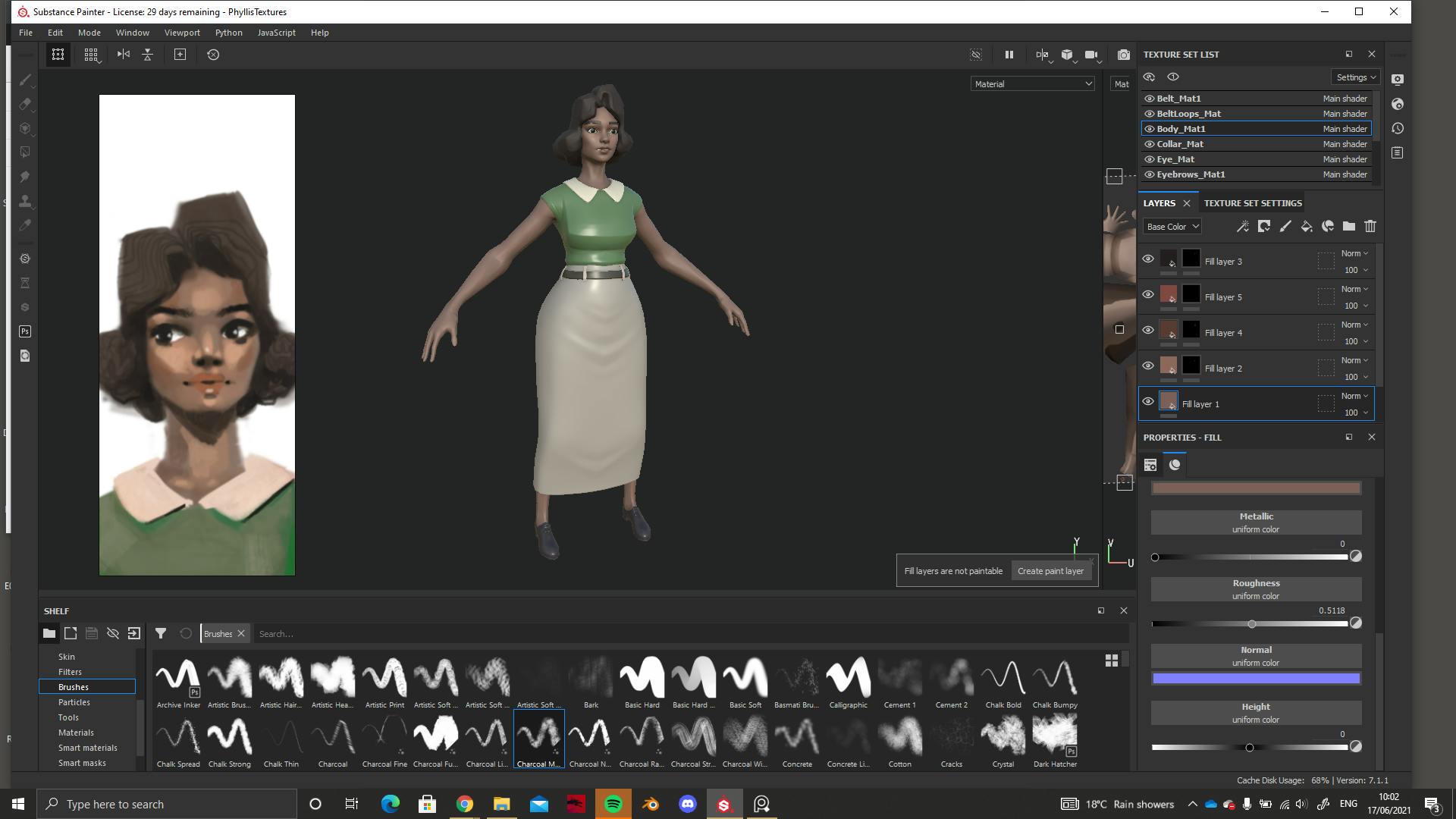
And there you have it – a game-ready Phyllis. From there, it’s back over to the writer for dialogue, emotions and voice direction. But we’ll save all that for another post!
